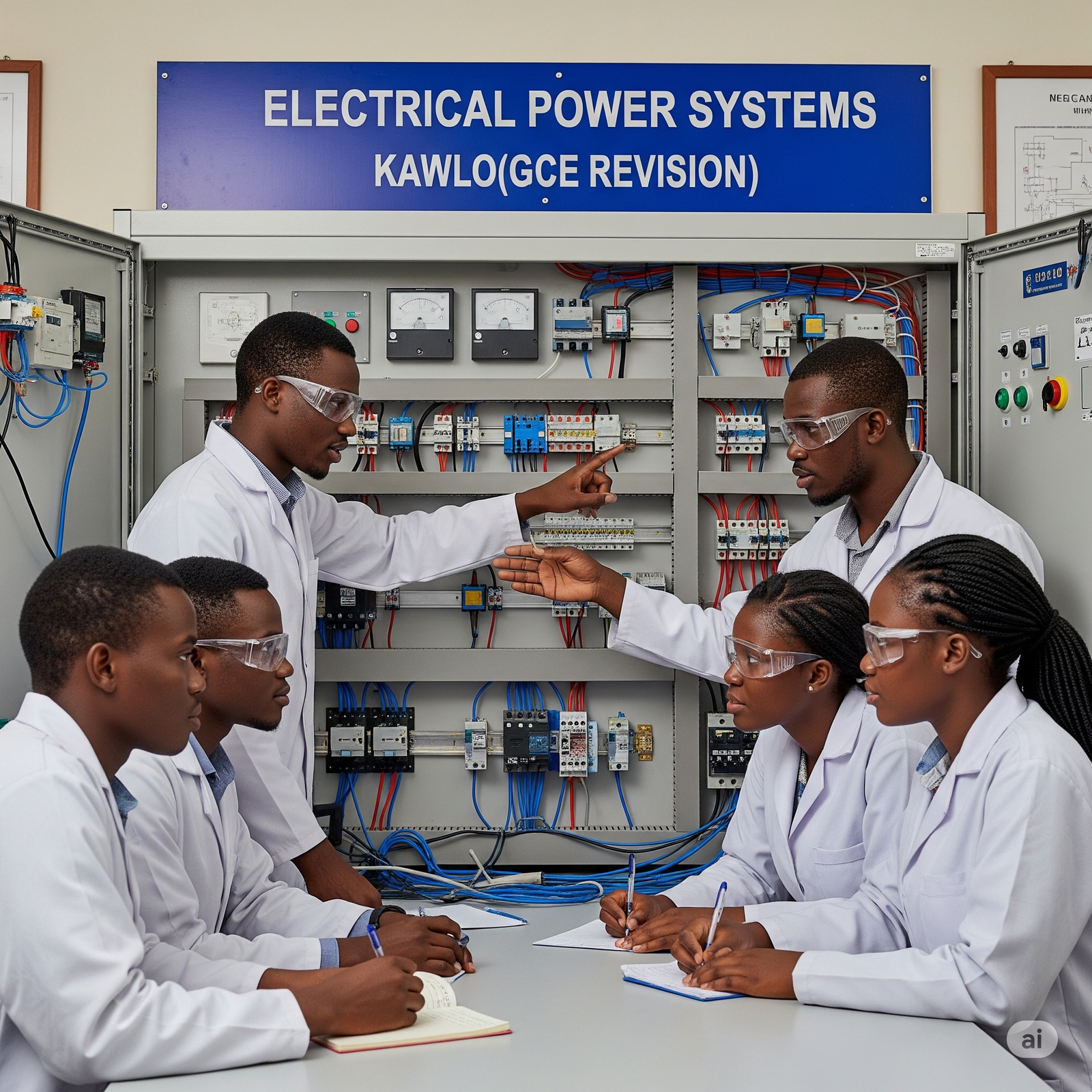Cameroon GCE advanced level June 2025 mathematics with mechanics 3
Cameroon GCE advanced level June 2025 mathematics with mechanics 3
Here are the questions extracted from the provided images:
From image_47765c.jpg:
- The position vector r of a particle P of mass 3 kg at time t seconds is given by r=[(t+sin2t)i+(cos2t)j] m.
Find, when t=4π:
(a) the acceleration of P,
(b) the magnitude of the force acting on P,
(c) the magnitude of the momentum of the particle.
Another particle Q is moving with velocity v=(−i+2j) m s$^{-1}$ in the same direction as P.
(d) Find the velocity of P relative to Q when t=4π.
- (i) Particles of masses m kg, 4 kg, 3 kg and 1 kg are placed in the xy plane at points with position vectors (5i−j) m, (3i+2j) m, (−3i+3j) m and (−6i−2j) m respectively. Given that their centre of mass is at the point with position vector (ai+1017j), where a is a constant.
Find the values of m and a.
(ii) A particle of mass 3 kg is attached to the centre of a smooth horizontal table by a light inextensible string of length 3 m. If the particle moves in a horizontal circle on the table with constant speed 33 m s$^{-1}$, find,
(a) the angular speed of the particle,
(b) the tension in the string.
(iii) An elastic string of natural length 0.8 m and modulus of elasticity 32 N is stretched until the tension in it is 1.8 N. Calculate the energy stored in the string.
- A block P of mass 4 kg lies on a plane inclined at an angle of 60° to the horizontal. It is connected to another block Q of mass 6 kg which hangs freely by means of a light inextensible string passing over a smooth fixed pulley at the top of the plane. Find the acceleration of the system and the tension in the string if
(a) the plane is smooth,
(b) the plane is rough and the coefficient of friction between P and the plane is 53.
(Take g as 10 m s$^{-2}$)
- Two smooth spheres A and B of equal radii and of masses 1 kg and 3 kg respectively, are moving in the same direction on a smooth horizontal floor with speeds 4 m s$^{-1}$ and 2 m s$^{-1}$ respectively. Sphere A subsequently collides with B. Given that the coefficient of restitution between A and B is 32, find,
(a) the speeds of A and B immediately after collision,
(b) the magnitude of the impulse exerted by A on B during the collision,
(c) the kinetic energy lost during the collision.
- A particle is projected from a point O with speed 52 m s$^{-1}$ at an angle θ to the horizontal, where tanθ=125.
Find,
(a) the distance from O, of the particle 1.5 seconds later,
(b) the maximum height attained above the point of projection,
(c) the time taken to attain the maximum height,
(d) the horizontal range and the total time of flight.
(Take g as 10 m s$^{-2}$)
From image_477662.jpg:
- A uniform ladder AB, of length 2a and weight W is in equilibrium with the end A on a rough horizontal floor and the end B against a smooth vertical wall. The ladder makes an angle of 45° with the horizontal and is in a vertical plane which is perpendicular to the wall.
(a) Find the value of μ, the coefficient of friction between the ladder and the floor.
(b) Find how far up the ladder a boy of weight 2W can climb before the ladder begins to slip.
- (i) A car of mass 1000 kg is subjected to a non gravitational resistance to its motion of magnitude (100+kv2) newtons, where k is a constant and v is the speed of the car. When the engine of the car is working at a rate of 28 kW, the maximum speed up a slope of inclination θ to the horizontal, where sinθ=201 is 20 m s$^{-1}$.
(a) Find the value of k.
Given that the engine of the car continues to work at the same rate,
(b) find the acceleration of the car when its speed is 10 m s$^{-1}$ up the slope.
(ii) A particle moves in a straight line such that its acceleration a at time t seconds is given by
a=(2t−1) m s$^{-2}$,
where v is the speed of the particle. Initially, the particle is at the origin moving with speed 3 m s$^{-1}$.
Show that at time t seconds, the speed of the particle is given by v=2+e4t2. (Note: The provided formula v=2+e4t2 seems incorrect based on typical integration of acceleration. It’s likely a typo and should be v=4t2−t+3 or similar after integrating the given acceleration and using initial conditions. I will state the question as it appears, but note the potential issue.)
- (i) Two independent events A and B are such that P(A)=41, P(A∪B)=43. Find,
(a) P(B),
(b) the probability of either A or B, but not both occurring.
(ii) A bag contains 5 red balls and 4 white balls. A ball is drawn at random from the bag, its color noted and is then replaced with another ball of the other color. A second ball is drawn from the bag.
(a) Draw a probability tree diagram showing all possible outcomes.
Hence, find the probability of drawing
(b) two balls of the same color,
(c) at least a red ball.















